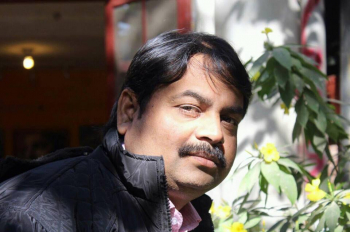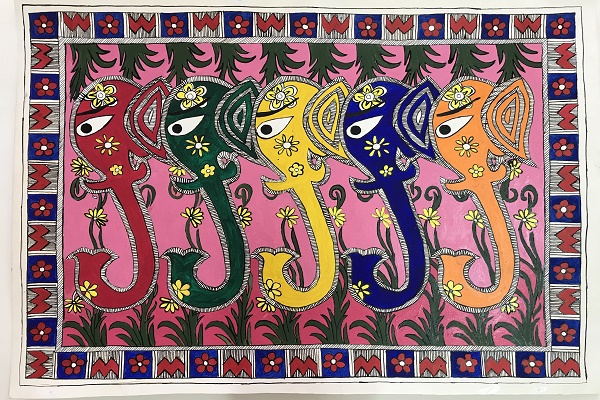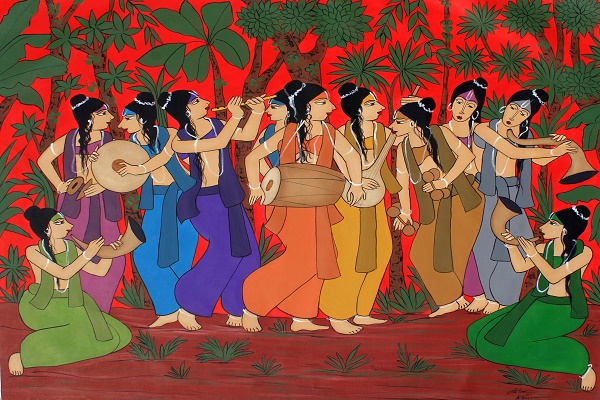
Art has always been a reflection of our ever-evolving world, but within the vast canvas of creativity, two distinct epochs stand tall - traditional masterpieces and contemporary paintings. They beckon us to explore the age-old question: where does the heart of true artistry lie? This blog ventures to unravel this captivating enigma. Let's embark on a journey that juxtaposes the timeless elegance of classics with the bold innovation of the modern. What makes one a masterpiece and the other a creation of our times?
Traditional Masterpieces: Timeless Elegance
Traditional paintings are the jewels of the art world, characterized by their enduring beauty and timeless appeal. These artworks are typically created using classical techniques, often showcasing remarkable precision, intricate details, and a deep sense of craftsmanship. They adhere to well-established artistic norms, focusing on realism and harmony. These pieces often revolve around universally relatable themes, such as religion, mythology, or portraiture, and they tend to use conventional mediums like oil paints, tempera, and canvas.
Renowned Traditional Masterpieces
In conversations about traditional masterpieces, one cannot help but conjure names like Leonardo da Vinci's Mona Lisa, his iconic The Last Supper, and the awe-inspiring Sistine Chapel ceiling crafted by Michelangelo. These artworks are revered for their exceptional technical mastery and profound historical and cultural import. The delicate portrayal of subjects, vivid use of color, and intricate detailing in each of these artworks exemplify the essence of traditional art.
The Enduring Appeal of Classic Art
What makes traditional paintings endure through the ages is their ability to connect with the human experience across time. Their themes, often rooted in timeless human emotions and stories, make them universally accessible. The precise artistry and unwavering commitment to detail enthral art connoisseurs and scholars. Traditional masterpieces offer a portal to the past, offering a glimpse of an ancient world suspended in a moment of exquisite beauty. In a rapidly changing world, they remain steady and offer a profound sense of continuity and aesthetic delight that transcends generations. This enduring appeal cements traditional masterpieces as integral to art history and our cultural heritage.
Contemporary Paintings: Breaking Boundaries
Contemporary paintings are a dynamic canvas where artists unshackle themselves from traditional constraints. In essence, they're a reflection of the present moment. Unlike classical art, contemporary paintings push the boundaries of expression, embracing freedom in form, color, and subject matter. They often blur the lines between various art forms, incorporating multimedia elements to convey a more immediate, modern message. In contemporary paintings, you'll discover an open playground where artists challenge norms and invite viewers to question, ponder, and feel a deeper connection to today's art.
Renowned Contemporary Artists and Their Works
In contemporary art, there are luminaries whose creativity shines brightly. Artists like Yayoi Kusama, known for her mesmerizing polka-dotted masterpieces, or Banksy, the elusive street artist, leave indelible marks on the art scene. Yayoi Kusama's Infinity Mirrors transport you into otherworldly dimensions, while Banksy's thought-provoking street art captures the essence of contemporary social and political issues. These artists and their works exemplify the diversity and depth of contemporary art, illustrating its ability to engage, challenge, and inspire.
Evolution of Art in the Modern World
Art has always been a reflection of the world it inhabits. Art has evolved alongside technological advancements and shifting societal norms in the modern era. Contemporary paintings mirror our complex, fast-paced lives, capturing the essence of our time. They adapt to emerging mediums, from digital art to installations, and often address global issues such as identity, climate change, and the human experience. The evolution of art in the modern world isn't just about creating pretty pictures. It's about provoking thought, igniting emotions, and leaving an indelible mark on our cultural tapestry. Contemporary paintings are the vibrant chapters in this ever-unfolding story, inviting us to explore, reflect, and appreciate the artistry of today.
Contemporary vs. Traditional Paintings: Aesthetics and Technique
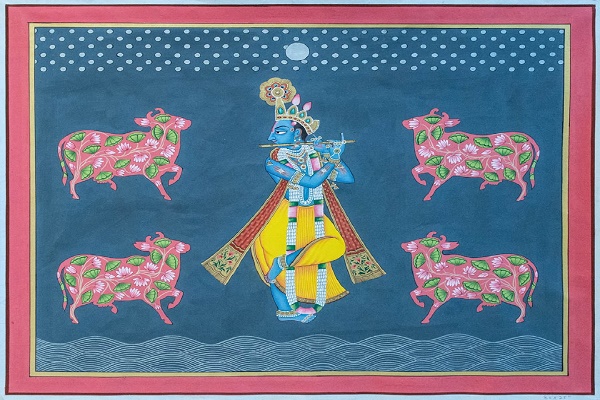
In art, aesthetics, and technique are pivotal in distinguishing traditional paintings from contemporary expressions. The canvas of human creativity has witnessed a profound evolution, with each era contributing its unique strokes to the grand tapestry of artistic innovation.
Contrasting Artistic Techniques
Traditional and contemporary art showcase a striking contrast in their artistic techniques. Traditional masterpieces, with their centuries-old roots, often employ meticulous and time-honored methods. Think of Renaissance painters skillfully using oil paints to create lifelike, intricate details. In contrast, contemporary artists embrace innovation, experimenting with a plethora of unconventional materials and techniques. It's a shift from the classical to the avant-garde, focusing on pushing boundaries.
Differing Aesthetics
The aesthetics of these two styles differ significantly. Traditional paintings often leans towards a realistic, highly detailed, and emotionally expressive approach. The goal is to create an almost tangible connection between the viewer and the artwork. Think of the rich, deep colors and intricate brushwork in a classical portrait.
In contemporary art, aesthetics take a different route. Here, it's about breaking free from the confines of tradition. You'll find a more diverse range of aesthetics, from abstract and minimalist to surreal and provocative. The emphasis is on individual expression; sometimes, the aesthetics can be intentionally challenging, prompting viewers to think and feel in new ways.
The Role of Innovation
In contemporary art, innovation takes center stage. Artists explore uncharted territories and experiment with digital media, mixed materials, and conceptual approaches. Innovation is the driving force that propels art into new dimensions, challenging preconceived notions and provoking thought.
Traditional art, on the other hand, cherishes the preservation of proven techniques and the continuation of established artistic traditions. Though it undergoes evolution, these shifts typically unfold gradually, honoring the legacy set by earlier generations.
Read More: Discover the Perfect Piece of Contemporary Paintings for Your Home
Contemporary vs. Traditional Paintings: Cultural and Historical Context
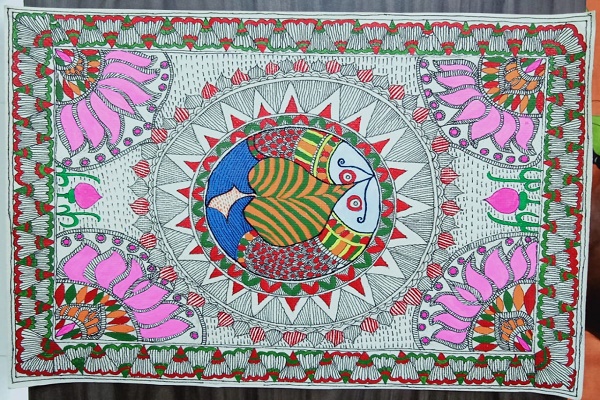
Art is a timeless language that speaks to the heart of human existence. It captures the world's beauty and mirrors the society and culture from which it springs. Within the world of art, we find ourselves at the crossroads of tradition and innovation, history and modernity. Our journey into art's cultural and historical context unveils the intriguing and harmonious interplay between traditional paintings and contemporary art.
The Cultural Influences on Traditional Masterpieces
Traditional paintings are like time capsules, capturing the essence of the eras in which they were painted. When you behold a classic painting, you're not merely observing art; you're taking a glimpse into the cultural tapestry of its era. The prevailing beliefs, values, and social norms often shaped these timeless gems.
For instance, the Renaissance period gave rise to exquisite works like Leonardo da Vinci's Mona Lisa, showcasing the era's fascination with humanism and scientific discovery. The opulent Baroque era brought us grandeur, as seen in Caravaggio's dramatic paintings, mirroring the grandiosity of the time. Traditional masterpieces are living documents of history, depicting their age's tales, customs, and values.
How Contemporary Art Reflects the Current Cultural Landscape?
In contrast, contemporary art takes a more immediate and reflective approach. It serves as a mirror to our present, offering commentary on today's ever-changing cultural dynamics. Artists today are deeply intertwined with the modern world, responding to and shaping our evolving societies.
Contemporary art explores themes like globalization, technology, diversity, and social issues. It engages with the now, often sparking conversations and challenging our perceptions. Artists capture the essence of the 21st century through a multitude of mediums, from digital installations to street art.
Comparing the Societal Impact of Both Art Forms
When we compare the societal impact of traditional masterpieces and contemporary art, we see their profound influence on different generations. Traditional masterpieces hold a cherished place in history, shaping our understanding of the past. They remain a testament to human achievement and cultural heritage.
On the other hand, contemporary art plays an active role in shaping our current cultural landscape. It influences discussions, evokes emotions, and provides fresh perspectives. It challenges us to think critically and embrace change. Both forms enrich our lives in their unique ways. Traditional paintings connect us to our roots, while contemporary art keeps us rooted in the present, reminding us that culture and art are ever-evolving and forever entwined.
Contemporary vs. Traditional Paintings: Audience Engagement
In its diverse manifestations, art can enchant and create connections with audiences across time and space. In the following segment, we will explore how traditional masterpieces and contemporary art captivate their viewers, unveiling the fascinating interaction between the past and the present. Furthermore, we will investigate the essential role that technology and social media play in promoting and making contemporary art more accessible.
How Traditional Masterpieces Appeal to Viewers?
Traditional paintings, the venerable works of renowned artists from the past, have an enduring appeal that transcends time. These artworks connect with viewers through the following:
1. Timeless Beauty
Classical works are celebrated for their aesthetics, which showcase technical prowess and an acute eye for detail. The profound beauty and serene harmony found in masterpieces such as Leonardo da Vinci's "Mona Lisa" or Vincent van Gogh's "Starry Night" leave an indelible mark on the human soul.
2. Historical and Cultural Significance
Traditional masterpieces often embody the values and stories of their era, providing viewers with a window into history and culture. They invite us to ponder the past and the artistic heritage that has shaped our present.
3. Emotional Impact
These masterpieces profoundly evoke emotions and stir the human spirit. Whether it's the haunting melancholy of Edvard Munch's "The Scream" or the serenity of "The Birth of Venus" by Sandro Botticelli, they elicit a wide range of feelings.
The Ways Contemporary Art Engages with a Modern Audience
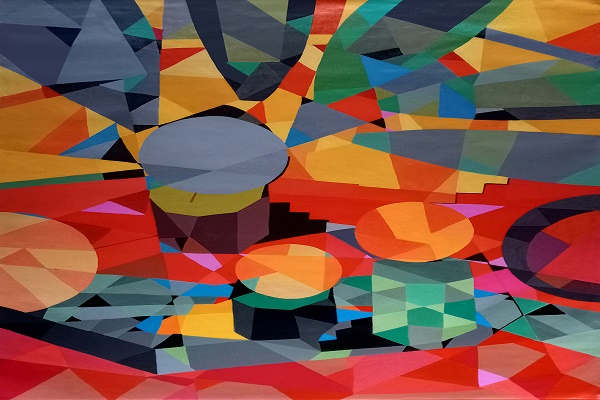
Contemporary art, on the other hand, navigates the complexities of the modern world and connects with audiences through:
1. Bold Expression
Contemporary art is often marked by its freedom of expression. It encourages artists to explore unique and unconventional approaches. This boldness resonates with a modern audience seeking fresh perspectives.
2. Social and Political Commentary
Many contemporary artworks delve into issues like identity, inequality, and environmental concerns. They spark vital conversations and reflections on contemporary societal challenges.
3. Interactive and Immersive Experiences
Installations, performance art, and digital creations offer interactive and immersive experiences. It makes art more participatory and accessible to the public.
Interesting Blog: The Top 9 Contemporary Paintings And Art Styles
The Role of Technology and Social Media in Contemporary Art Promotion
In today's digital age, technology, and social media are indispensable tools for promoting contemporary art:
1. Global Reach
Platforms like Instagram, Facebook, and online galleries allow artists to share their work with a global audience instantly. Artists can now connect with admirers from diverse corners of the world.
2. Visual Storytelling
Artists and art institutions use social media to tell the stories behind their creations. Thus, they offer context and insights into the artistic process, enriching the viewer's understanding and appreciation.
3. Accessibility
The internet has democratized art, opening doors to a wider audience. Through digital exhibitions and virtual galleries, contemporary art is now within reach for anyone with an internet connection, inviting engagement and participation.
Ultimate Face-Off: Traditional vs Contemporary Paintings
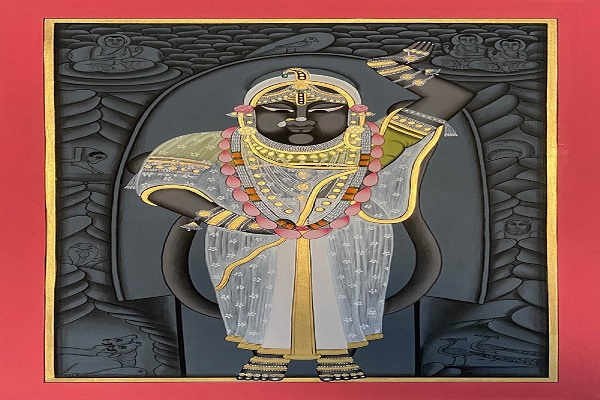
This table provides a concise overview of the key distinctions between traditional and contemporary paintings.
|
Aspect |
Traditional Paintings |
Contemporary Paintings |
|
Time Period |
Predominantly pre-20th century |
Post-20th century |
|
Style |
Realistic, detailed, and often classical |
Diverse, innovative, and experimental |
|
Subject Matter |
Often historical, religious, or mythological. |
Wide range of themes, including current events, personal experiences, and abstract concepts |
|
Techniques |
Emphasis on meticulous detail and mastery of traditional methods |
Utilizes various media, techniques, and materials, often embracing technology |
|
Audience Engagement |
Appeals to viewers through timeless beauty, historical significance, and emotional impact |
Engages with bold expression, social and political commentary, and immersive experiences |
|
Historical and Cultural Significance |
Reflects values, beliefs, and traditions of its era |
Explores contemporary societal issues, cultural diversity, and the evolving world |
|
Accessibility |
Typically found in museums, galleries, and private collections |
Showcased in both physical and digital spaces, often accessible to a global audience |
|
Promotion and Exposure |
Mainly reliant on physical exhibitions and traditional marketing |
Leverages technology and social media for global visibility and interaction |
|
Market Dynamics |
Often associated with high-value, antique market |
Varied pricing, market influenced by trends, and emerging artists |
Coexistence of Traditional and Contemporary Art Forms
The harmony between traditional and contemporary art within the art world reflects the dynamic and ever-evolving essence of artistic expression. Traditional and contemporary art have established their niches in this diverse ecosystem. Each makes distinctive contributions and resonates with diverse audiences.
Traditional art is a cherished legacy with its historical roots, time-tested techniques, and cultural significance. It connects to the past, preserving the rich heritage of artistic achievements. Museums and galleries worldwide continue to showcase traditional masterpieces, drawing in enthusiasts and scholars who appreciate these works' enduring beauty, historical context, and emotional depth.
On the other hand, contemporary art represents the ongoing evolution of creativity. It reflects the changing world, adapting to modern sensibilities, technologies, and global issues. Contemporary artists often push boundaries, experimenting with new media and forms of expression. Their works challenge conventional norms, provoke thought, and address societal concerns.
What makes this coexistence truly remarkable is the exchange of ideas and inspirations between traditional and contemporary artists. Frequently, contemporary artists draw inspiration from the classics, infusing traditional art elements into their creations. This harmonious blend of the past and the present weaves a vibrant tapestry of artistic diversity.
Art institutions, galleries, and curators recognize the value of this coexistence. Many exhibitions and events feature a blend of both traditional and contemporary art. It fosters a dialogue between generations of artists and art lovers. This coexistence enriches the art world and allows audiences to appreciate the nuances of different artistic eras.
Wrapping Up
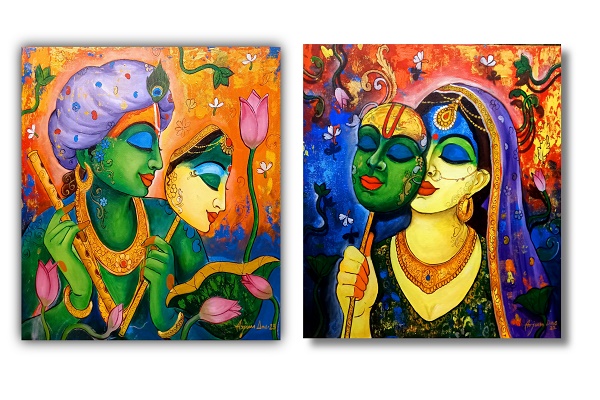
In the intricate tapestry of the art world, the coexistence of traditional and contemporary art forms unfolds as a mesmerizing narrative of creativity's enduring legacy. Traditional masterpieces, with their roots firmly grounded in history, stand as revered guardians of artistic heritage. These timeless works, crafted with meticulous detail and a deep sense of craftsmanship, beckon us to embrace the aesthetic beauty and the stories of bygone eras they hold.
In contrast, contemporary paintings surges forth, a dynamic reflection of our ever-evolving world. The contemporary canvas is unburdened by tradition, allowing artists to explore new realms of expression, embracing technology and fresh perspectives. It engages audiences with bold statements, social commentary, and immersive experiences, mirroring the complexities and challenges of the modern age.
A captivating exchange of ideas unfolds in this harmonious coexistence, as contemporary artists frequently find inspiration in the classics. They infuse their creations with the timeless elements of traditional art, creating a dynamic interplay that bridges generations and fosters a vibrant dialogue between the past and the present.
Ultimately, the coexistence of these two art forms serves as a profound reminder that art transcends temporal and traditional constraints. It is a vibrant, evolving entity that continually adapts, inspires, and challenges us. As we navigate the dynamic interplay between today's enduring classics and bold innovations, we immerse ourselves in the grand narrative of artistic expression. This ever-unfolding journey ignites our imagination and sparks our creativity.













